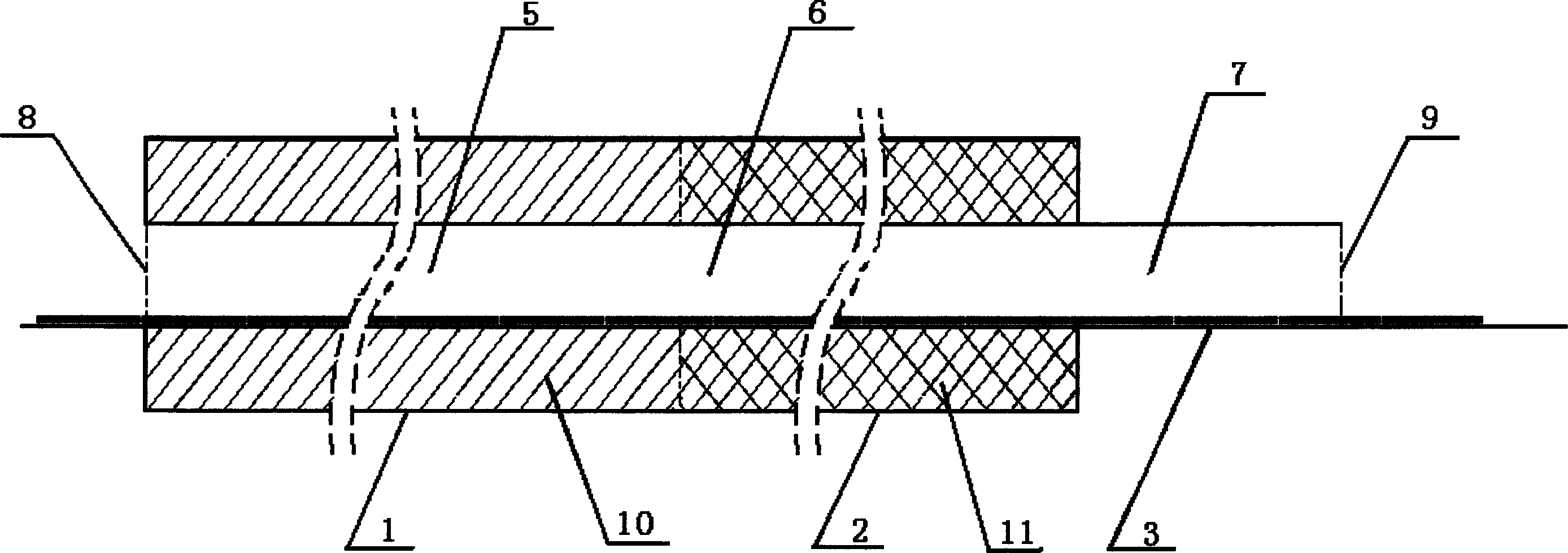Method for producing lithium ion cells positive electrode material and equipment thereof
A technology for lithium ion batteries and cathode materials, which is applied in the field of preparation of cathode materials for lithium ion batteries, can solve the problems of slow heating rate, wide particle size range, long sintering time, etc., and achieves shortened duration, easy formulation control, and sintering time. the effect of shortening
- Summary
- Abstract
- Description
- Claims
- Application Information
AI Technical Summary
Problems solved by technology
Method used
Image
Examples
Embodiment 1
[0060] Lithium cobalt oxide (LiCoO) is a cathode material for lithium-ion batteries. 2 ) preparation: raw material Co 3 o 4 with LiOH·H 2 O was uniformly mixed according to the Li / Co molar ratio of 1:1 and placed in a crucible, and then the crucible was placed in a microwave oven, and synthesized at a microwave frequency of 0.915 GHz and a temperature of 800 °C for 30 minutes. Then the crucible was automatically moved into the electric furnace by a mechanical transfer device, and continued to react at a constant temperature of 800°C for 20 minutes, and was taken out after natural cooling. The product is crushed and sieved to obtain the lithium cobaltate product. The particles of this product are uniform, the electrochemical reversible capacity is over 135mAh / g, and the cycle performance is good.
Embodiment 2
[0062] Lithium cobalt oxide (LiCoO) is a cathode material for lithium-ion batteries. 2 ) preparation: raw material Co 3 o 4 with LiOH·H 2 O was uniformly mixed according to the Li / Co molar ratio of 1:1 and placed in a crucible, and then the crucible was placed in a microwave oven, and synthesized at a microwave frequency of 2.45 GHz and a temperature of 800 °C for 30 minutes. Then the crucible was automatically moved into the electric furnace by a mechanical transfer device, and continued to react at a constant temperature of 800°C for 20 minutes, and was taken out after natural cooling. The product is crushed and sieved to obtain the lithium cobaltate product. The particles of this product are uniform, the electrochemical reversible capacity is over 140mAh / g, and the cycle performance is good.
Embodiment 3
[0064] Lithium cobalt oxide (LiCoO) is a cathode material for lithium-ion batteries. 2 ) preparation: raw material Co 3 o 4 with LiOH·H 2 O was uniformly mixed according to the Li / Co molar ratio of 1:1 and placed in a crucible, and then the crucible was placed in a microwave oven, and synthesized at a microwave frequency of 28 GHz and a temperature of 850 °C for 5 minutes. Then the crucible was automatically moved into the electric furnace by a mechanical transfer device, and the reaction was continued for 300 minutes at a constant temperature of 800°C, and it was taken out after natural cooling. The product is crushed and sieved to obtain the lithium cobaltate product. The particles of this product are uniform, the electrochemical reversible capacity is over 140mAh / g, and the cycle performance is good.
PUM
 Login to View More
Login to View More Abstract
Description
Claims
Application Information
 Login to View More
Login to View More - R&D
- Intellectual Property
- Life Sciences
- Materials
- Tech Scout
- Unparalleled Data Quality
- Higher Quality Content
- 60% Fewer Hallucinations
Browse by: Latest US Patents, China's latest patents, Technical Efficacy Thesaurus, Application Domain, Technology Topic, Popular Technical Reports.
© 2025 PatSnap. All rights reserved.Legal|Privacy policy|Modern Slavery Act Transparency Statement|Sitemap|About US| Contact US: help@patsnap.com


